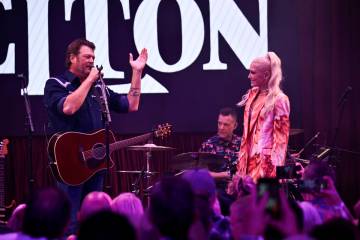Local woman finds creative outlet to cope with postwar life
When Michelle Wilmot first returned from Iraq, she numbed herself with a steady diet of Cap’n Crunch cereal and Arby’s.
It wasn’t the healthy outlet that art now provides for the Army veteran. The 31-year-old has amassed a portfolio of dozens of paintings, drawings and mixed-media pieces since she turned to art to deal with the feelings and frustrations left over from her military career.
But for a few weeks, before art became her salvation, the self-medication worked. The constant supply of fat and sugar kept her true feelings stuffed deep inside where she didn’t have to face the truth: that she had been forever altered by the things she did and saw during the war.
And she had yet to be presented with the reality that her role as a female combat veteran would be challenged again and again by a society that is still not comfortable with the idea of women fighting its wars.
“I just wanted to be invisible, be Jack Reacher and stay off the grid for a while,” Wilmot recalls of those early days after her service ended. “I wanted to eat my roast beef sandwich and have everyone leave me alone. But that didn’t happen.”
Wilmot was shaken out of her honeymoon phase by a fellow student mouthing off about the military. It happened during a philosophy class she enrolled in after leaving the Army in 2006.
The student said that soldiers deserved to die in Iraq because they chose to go there. She wasn’t necessarily upset about those words, even though they were disturbing. People often say stupid things, Wilmot says. It was the fact that no one else in the classroom challenged the woman’s statement. That’s what enraged her.
And suddenly, all the anger, confusion and pain that had been building since her one-year deployment to Iraq exploded. It forced its way past the Crunch Berries barrier she had so carefully built and regurgitated all over her fellow student.
Wilmot sat at her desk, gripping the edge of it so hard she thought it would break. She dared the woman to repeat those words to her face.
“I told her if I deserve to die, come over here and kill me,” Wilmot says.
This was the point where Wilmot realized that something was wrong, both with her and with the way others viewed veterans.
“It was a light switch,” she says.
At first, she did what any other veteran seeking help does: Wilmot called the Department of Veterans Affairs. And, like many other veterans, she did not have a good experience. When she identified herself as a combat veteran, she was not taken seriously. At the time Wilmot served in Iraq, women were still officially barred from combat.
But the former Army medic and mental health counselor served as a member of Team Lioness from 2004 to 2005. The team was made up of about 20 Army women who were attached to Marine units. Many of them served during some of the most violent uprisings in Ramadi. They were tasked with manning road checkpoints, going on house raids and other combat missions. Their role was to provide a female presence, search and question Iraqi women and children, and fight alongside the Marines while carrying out these missions.
The documentary “Lioness” tells the story of the impact that combat had on some of those women, including Wilmot.
Born and raised in New York to a Chamorro mother and an Irish father, Wilmot calls herself “ambiguously ethnic.” People mistake her for Hawaiian, Filipina, Japanese, Arabic, just about anything but Chamorro, a member of the indigenous tribe of the Mariana Islands. She is proud of her cultural heritage and fiercely protective of it.
The warrior attitude is a strong Chamorro trait so when she joined the military at 17, Wilmot was simply carrying on a long, cultural tradition. And her ethnicity shaped her military experience; she closely follows immigration issues in this country. These various sides of Wilmot all inform her artwork.
Just a quick glance at her website, thedesertwarrior.com, shows the scope of her interests and her issues. “She is not the picture people have of a veteran,” says Gabe Forsberg, a friend of Wilmot’s who recently retired from the Arizona Department of Veterans Services.
Forsberg became aware of Wilmot shortly after the release of the “Lioness” documentary. Wilmot had been named Massachusetts’ Woman Veteran of the Year in 2009 and was advocating for women veterans. Forsberg helped Wilmot land a job with the Phoenix VA, where she worked for a short time before moving to Las Vegas in 2012. She lives here with her boyfriend, Alex, and her young daughter.
“She is a PTSD survivor,” says Forsberg, who owns at least nine pieces of Wilmot’s artwork. “She’s been a huge advocate for people who come back forever changed. And because Michelle is healing through her art, she’s been able to help men and women who have struggled.”
Wilmot started drawing and painting when she was a young girl. Over the years, she kept a journal, sketching things that interested her, writing down ideas or words that resonated with her. It wasn’t until she lived in the Czech Republic for a semester that her eyes were opened to the possibility of using art for expressing not only her feelings but a message to the world.
Wilmot studied Czech artist David Cerny, a controversial figure who did an exhibit called “Pink Tank.” The piece is exactly what it’s name implies: A giant military tank, painted pink. The exposure to such politically inspired, in-your-face art made her see art in a new way.
“They were doing dark, funny stuff that made you think,” Wilmot says.
In 2008, she did a piece called Baraa’a, which means “to shine” in Arabic. The pencil drawing depicts a girl playing with garbage outside a checkpoint in Ramadi. It was a scene taken right out of Wilmot’s personal experiences serving on Team Lioness.
She didn’t touch the subject of war art again until 2010, when she was invited to participate in an Arizona exhibit of combat art.
She did the piece “La it khafeen, Habibti,” Arabic for “Don’t be afraid, Sweetheart.” It’s a pencil drawing of three mothers holding their children as American troops search their home. A little girl stares out with a frightened expression. It was a scene that Wilmot witnessed in person.
“That was probably the most painful piece I ever did,” Wilmot says. “That’s where the guilt comes from. We had the power to do these amazing things there, and these kids are left with these memories. And we’re starring in them.”
Recently, she released a novel based on her experiences in Iraq, “Quixote in Ramadi.” It’s available on Amazon.
Catharsis through art is a great thing, says Lily Casura, founder of the website healingcombattrauma.com. In the years since she started the site, Casura has become an expert in nontraditional healing methods. She’s talked to several veterans who have used art to deal with their feelings about their roles in the war and post-traumatic stress disorder. It often helps in ways that talk therapy and medication cannot, she says.
“I’m thrilled to see what she’s doing with it,” Casura says of Wilmot. The two have become friends over the years, each supporting the other in her efforts to help combat veterans. “She’s a very powerful person. She seems really satisfied with her art and she’s having an impact on the world around her.”
That’s Wilmot’s main goal, to do artwork that sparks a conversation about important topics that are meaningful to her, other women veterans and minorities.
“Art,” she says, “is a great way to protest.”
Contact reporter Sonya Padgett at spadgett@review journal.com or 702-380-4564. Follow @StripSonya on Twitter.































